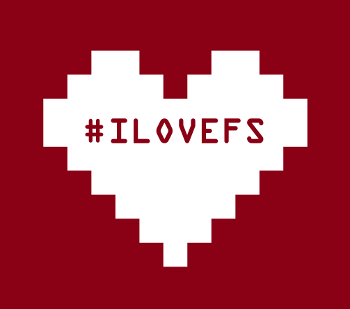Thoughts about tech, politics, and more
(Category: english)
Build FSFE websites locally
Note: This guide is also available in FSFE’s wiki now, and it will be the only version maintained. So please head over to the wiki if you’re planning to follow this guide.
Those who create, edit, and translate FSFE websites already know that the source files are XHTML files which are build with a XSLT processor, including a lot of custom stuff. One of the huge advantages from that is that we don’t have to rely on dynamic website processors and databases, on the other hand there are a few drawbacks as well: websites need a few minutes to be generated by the central build system, and it’s quite easy to mess up with the XML syntax. Now if an editor wants to create or edit a page, she needs to wait a few minutes until the build system has finished everytime she wants to test how the website looks like. So in this guide I will show how to build single websites on your own computer in a fraction of the FSFE’s system build time, so you’ll only need to commit your changes as soon as the file looks as you want it. All you need is a bit hard disk space and around one hour time to set up everything.
OpenRheinRuhr 2016 – A report of iron and freedom
Last weekend, I visited Oberhausen to participate in OpenRheinRuhr, a well-known Free Software event in north-western Germany. Over two days I was part of FSFE’s booth team, gave a talk, and enjoyed talking to tons of like-minded people about politics, technology and other stuff. In the next few minutes you will learn what coat hangers have to do with flat irons and which hotel you shouldn’t book if you plan to visit Oberhausen.
Switching my code from gitweb to Gogs

Since end of 2014 I published some of my Free Software code – mostly Bash, R and HTML/PHP – on a self-hosted gitweb instance. I did this because I wanted to share the work I’ve done with other people because I’ve learnt a lot by reading other people’s code. Although I’m just a „hobby programmer“, I hoped at least some people can benefit from it.
The last few days, I switched from gitweb, a very simple web interface for my git repositories, to Gogs, a feature-rich webservice which still is lightweight, and quite simple to install and maintain – and of course Free Software! By doing so, people can now register with my Gogs instance, open issue tickets, fork my projects and send pull requests – very similar to non/semi-free services like GitHub or GitLab.
I love Free Software (Apps)
Do you know being in a restaurant and getting a menu which is longer than the average novel, and you cannot decide for a single meal because every single one sounds more delicious than the other? That’s similar to the problem I was having when writing this blog post…
Today is the „I love Free Software“ day, on which people all over the world say „thank you“ to contributors of Free Software, often created in free time and with lots of passion. This is software you can use for any purpose, which source code you or others can analyse, which can be modified and distributed – any program respecting these essential freedoms benefits a fair society, and our most personal privacy and security in return.
German Government wants authorities to advertise PDFreaders

Should authorities be allowed to make advertisement for only one company and ignore all the others? Many people strongly disagree, among them myself, the Free Software Foundation Europe (FSFE) and also the CIO of the Federal Republic of Germany, the IT commissioner of the German Government.
The whole story began with something we all had to read sometimes, at least subconsciously, on a website providing PDF documents: „To open the PDF files please download Adobe Acrobat Reader.“. Such notices are unnecessary advertisement for a proprietary (non-free) product — there are dozens of software applications which can do the same or even more, many of them Free Software. Because of that the FSFE started a campaign called „PDFreaders“ to make this deficiency public, and contact administrations and companies with thousands of letters and emails.
splitDL – Downloading huge files from slow and unstable internet connections
Imagine you want install GNU/Linux but your bandwidth won’t let you…
tl;dr: I wrote a rather small Bash script which splits huge files into several smaller ones and downloads them. To ensure the integrity, every small files is being checked for its hashsum and file size.
That’s the problem I was facing in the past days. In the school I’m working at (Moshi Institute of Technology, MIT) I set up a GNU/Linux server to provide services like file sharing, website design (on local servers to avoid the slow internet) and central backups. The ongoing plan is the setup of 5-10 (and later more) new computers with a GNU/Linux OS in contrast to the ancient and non-free WindowsXP installations – project „Linux Classroom“ is officially born.
Technology and Free Software in Tanzania
After two months in Tanzania and in the computer education centre I work every day I learnt a lot about the culture of the locals in terms of their viewpoint on information technology. And in the same way I had to accept that my initial mental image of the people’s behaviour was (at least in parts) very wrong. So in this article I try to explain how I see the situation of modern technologies and the usage and understanding of Free Software in the region of Tanzania where I live.
In The End Freedom Is What Matters
Yesterday I’ve been asked by a good friend of mine why I am investing so much time in the FSFE (Free Software¹ Foundation Europe) instead of putting more energy in other organisations with more focus on privacy issues. The background of his question is that I’m quite concerned about governmental and commercial surveillance and the lack of really private ways to communicate with each other and the impact this has on our online and offline behaviour. With Laura Poitras‘ recent movie „Citizenfour“ awarded with an Oscar, I use the media attention as an icebreaker to talk with my friends about these topics if the situation allows it.
I love Taskwarrior, therefore I love Free Software
“It’s Valentine’s day and you’re writing a blog post? Are you nuts?” you might ask. Well, but it’s not only Valentine’s day but also I love Free Software day. This day is proclaimed every year on February 14 by the Free Software Foundation Europe to thank all developers and contributors of Free Software (software you can use for any purpose, which source code you or others can analyze, which can be modified and distributed).
Yourls URL Shortener for Turpial
Maybe you know Yourls, a pretty cool URL shortener which you can set up on your own server very easily. Link shorteners are nice to have because
- you can share long links with short urls and
- you can view and organise all links you ever shared (incl. statistics and so on).
There are many alternatives like bit.ly, ur1.ca and so on, but Yourls belongs to YOU and you don’t have to pay attention to ToS changes or the provider’s financial status. AND you can use whichever domain you own, for example in my case it’s s.mehl.mx/blabla.

